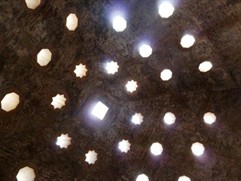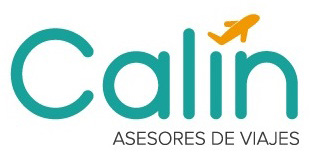The hammam in Morocco
We must be cautious and discreet when going to the Hammam: men always use swimsuit. Women always go better with a discreet swimsuit.
The Thursday night often have religious connotations as spiritual preparation for the main religious service on Fridays, and may not be timely visit to a non-Muslim.
Do not forget to bring soap, shampoo and personal towels. Also bring clothes to change and mat to lay on the floor if you do not want to be in direct contact with it. You can also carry pumice stones for massage or mittens.
I recommend that you leave all valuables in the hotel safe place, I mean wallet, passport, money, etc. Since in the hammam, you are just in swimsuit and although these are not thieves who care about your clothes, it is best not result in embarrassing situations.
You can buy olive oil soap (sabon bildi) in stores in the medina. There also can buy flannel gloves and ghasul (shampoo) .Many Moroccan use plastic mats to lie on the floor, they are sold everywhere and are very cheap.
Rules for using the hammam:
Do not dip your feet in the bucket, not sit on the cubes, use water bowls to lie, speak in a low voice.
First you enter the hot room. It is the one at the bottom and from where the water at higher temperatures. Do not ever get your water from this well as it is boiling and you would burn. Here you have to lie down and relax so that the pores open. 20 minutes is fine to be here lying quietly.
After you pass the warm room where there are faucets for hot water and cold water. Choose the site of the floor where you're going to sit and throw a bucket of hot water to wash. Fill a bucket after each water and a bowl of mixed and echándotela you use on the body. This is done sitting on the floor or mat. Once it is wet, that's when you soap up, you wash your head and entire body. Remember to clean, throwing buckets of water on the floor when you go.
You can also give a massage in this room that usually lasts 20 minutes.
Finally Cool down in the cold room and then go out and get dressed.
I think the hammam is one of the best experiences you can have in Morocco.
Something more about the hammam
Public toilets are heirs of the Roman baths. Most are very humble and economic; others, however, a treat for foodies. Not only serve as a resting place, but also social and political meeting.
Perhaps without much sophistication, and regardless of whether or not the have homes comfortable bathtubs, Moroccans still gladly come and hammam periodic manner. Not so much the more modernized.
The origin of this ancient folk custom probably comes from the recommendations in terms of hygiene and mandatory ablutions, Islam has always known how to instill, since, according to a hadith of the Prophet says: "Hygiene is a manifestation of faith" .
So clean and care for the body, besides being a pleasant practice, it is also an act of faith, where the water becomes the generous outpouring of creation and purifying element of body and soul.
To the Muslim world, water is a divine gift, but it also means deep wisdom and purity, the quintessential drink that quenches the thirst of the soul.
Therefore the hammam scenario becomes mandatory for major life events: birth, circumcision and marriage.
The Moroccans are convinced that the jinn (yenun) like to live where there is abundant water and, therefore, that in the hammam there geniuses who take over those who come to disturb them insolently. Therefore, when a newly married, a woman in labor or a newborn go to these public toilets to meet the ritual, candles are lit and "yu-yus" shout, invoking the blessing of the yen.
In Morocco each neighborhood has its hammam, which generally shares fire and boiler with an attached bread oven. There are days and times alternately reserved only for women or for men only. Usually women have tuno morning and evening men. We must also say that men have more time to enjoy the hammam women. There are also mixed hammanes where gender comes at any time of day but for different doors.
In some regions or between the more traditional families, hammam, is especially for women, one of his favorite distractions and everything generator beauty and sensuality ritual which has its own rules.
Usually come in groups, loaded to the brim of personal possessions, with their small children and accompanied by a relative or friend. Also men are accompanied, though certainly lighter luggage.
In this sense, the hammam is right for introducing children in sex education space, familiar from very small to the human body without taboos generally observed in other religions.
While it is the best place where any inequality vanishes social.
The hammam is a place where men gathered, they all seem, whether servants, whether lords. The man rubs shoulders with people who are not your friends, and your enemy can be your partner.
In the old medinas still remains in operation any of these baths traditional architecture, clad entirely zel-lig (tiles) with a central source of flowing water. Modern are simpler, although some want to imitate the same craft features. They consist of three correlative rooms, ranging dipping bathers gradually at different ambient temperatures, increasingly high. In the last of the rooms, a small pool receives a stream of boiling water along with other cold water overflow level making it.
The trick, if any, is to pour a bucket of hot water on the various body parts until the pores of the skin dilate and before applying any type of gel or soap, rub well with a rough sponge or pumice stone to remove dead toxins, rather "black". The drops of sweat sliding abundant and sometimes it is necessary a little cold water.
Each other, hammam users are massaged and rubbed the espalada almost irritate the epidermis, competing in vigor. And is that Moroccans are going to honor it. Everything always in an environment of modest modesty, which in principle allows exhibited beyond discretion.
There is also a staff that assists swimmers, rubbing them or by rubbing. The tayabastes women; the kiyassas men. Moroccan women, who to enhance their natural charms tend to smear with strange potions and home remedies usually do the hammam almost a salon that also allows them to shave, comb and detangle hair.
For washing the hair using a soapy clay called ghasul diluted in rose water and orange blossom, and to dye it and clean it up, traditional henna, which after taking several hours or even several days, divided by the head, for pasta, usually removed during his stay in the hammam.
And female employees steadily pour water on the ground, which is easy to slide, with the remains of ointment and soap. Children rebel shouting and crying, before scrubbing forceful mothers the subject.
Customers seem to never be in a hurry to finish, and in them a certain sense of freedom that undoubtedly produce space and lack of fear of stain or splashing beyond conventional bathtub warns.
Basically, the excuse of personal hygiene to indulge representing a real relaxing pleasure of tensions fail. Before going outside, Moroccans, who are extremely apprehensive air currents and temperature changes, take time to cool off in the relaxation room. Women then wrap your head with a scarf men -the yours with a towel and leave home so happy, dismissing passing a special clean smell that distinguishes the days of appointment hammam.
To round holiday, a delicious snack that usually consists of boiled eggs, almonds, sweets, fruit juices and irreplaceable like mint. At home, women more traditional, as did those of earlier, emperifollan in their best kaftans and beads and scented and well groomed, suggestive expect the arrival of her husband.
The magic of beauty treatments and hammam ritual is due to the feeling of being reborn, but to being yourself agent that rebirth not only.
Hay que ser prudentes y discretos cuando se va al hammam: los hombres siempre usarán el bañador. Las mujeres es mejor que vayan siempre con un bañador discreto.


